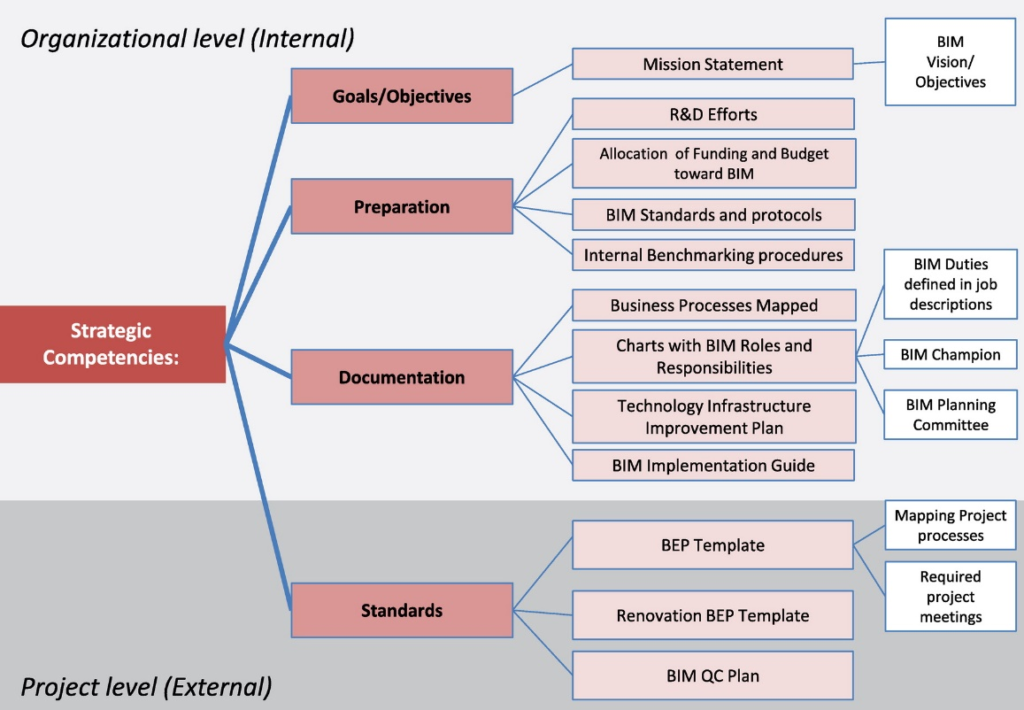The need for competencies of BIM specialists on a construction project
There are three main levels of competence in a BIM project, as at the organizational level, but there may be more, depending on the size of the project.
At the BIM management level, the key is usually the BIM manager, who develops, coordinates the BIM documentation – the BIM protocol, the main project document, as well as develops and coordinates project standards, client(s), delegates tasks and is ultimately responsible for managing the entire project BIM. In addition to the BIM manager, the project may include a BIM architect, a person in charge of BIM strategy, who assists the client or project board in developing the desired strategy and project objectives, translating them into technical language for the BIM manager and team. This position is required in the case of a large project or a number of project participants where a very large number of interests need to be reconciled. In this case, the project is very sensitive to the strategy and decisions made, BIM and project management knowledge alone is not enough.
The BIM coordination level is the practical level of BIM implementation at which the BIM protocol becomes a practice. The BIM coordinator is responsible for the selection of tools, their launch, the involvement of members, the quality control of the project part. Due to the large amount of work, the project often has more than one BIM coordinator with several working teams (subcontractors). It is best for the BIM coordinator to have separate teams. Otherwise, it is particularly difficult to manage information and responsibilities. In smaller projects, the BIM leader and coordinator may be the same person, but this is not recommended due to the excessive range of competencies required. Such a person must have legal knowledge as well as specific software and hardware knowledge.
The BIM developer level is the most important level for all end-users of BIM tools. Good technical and tool knowledge, ability to transmit information (data in the format that is most useful to receive the final recipient of information). It is important that procedures are in place to deviate from the BIM protocol in agreement with the BIM manual if this clearly contributes to the objectives of the project. In this case, the highest value is born.
In the long run, coordination and BIM project managers will be needed less and less. As the development of BIM becomes a common work tool and industry standards become more permanent, more technologically advanced data transfer standards will emerge, and project managers and information managers will take over the roles of BIM coordinators and BIM managers.
BIM technology professionals must have a good understanding of the engineering process and a solid IT knowledge baggage such as an Internet Security, Internet Networking, software, hardware, and programming. Be able to manage change, risk, stress tolerance, the ability to persuade people when they need it most. Be able to sell and get enough resources inside and outside the organization. Must have knowledge of contract preparation, knowledge of existing regulations, industry standards. It is necessary to know the engineering specifics of each part of the project that is being worked on. The BIM manager of an organization, that makes all engineering parts, needs to know what, for example, the design of an electrical part consists of, how it is designed and assembled, why this form of information is chosen, what questions one document or another answers. It is necessary to know the basics of project management.

